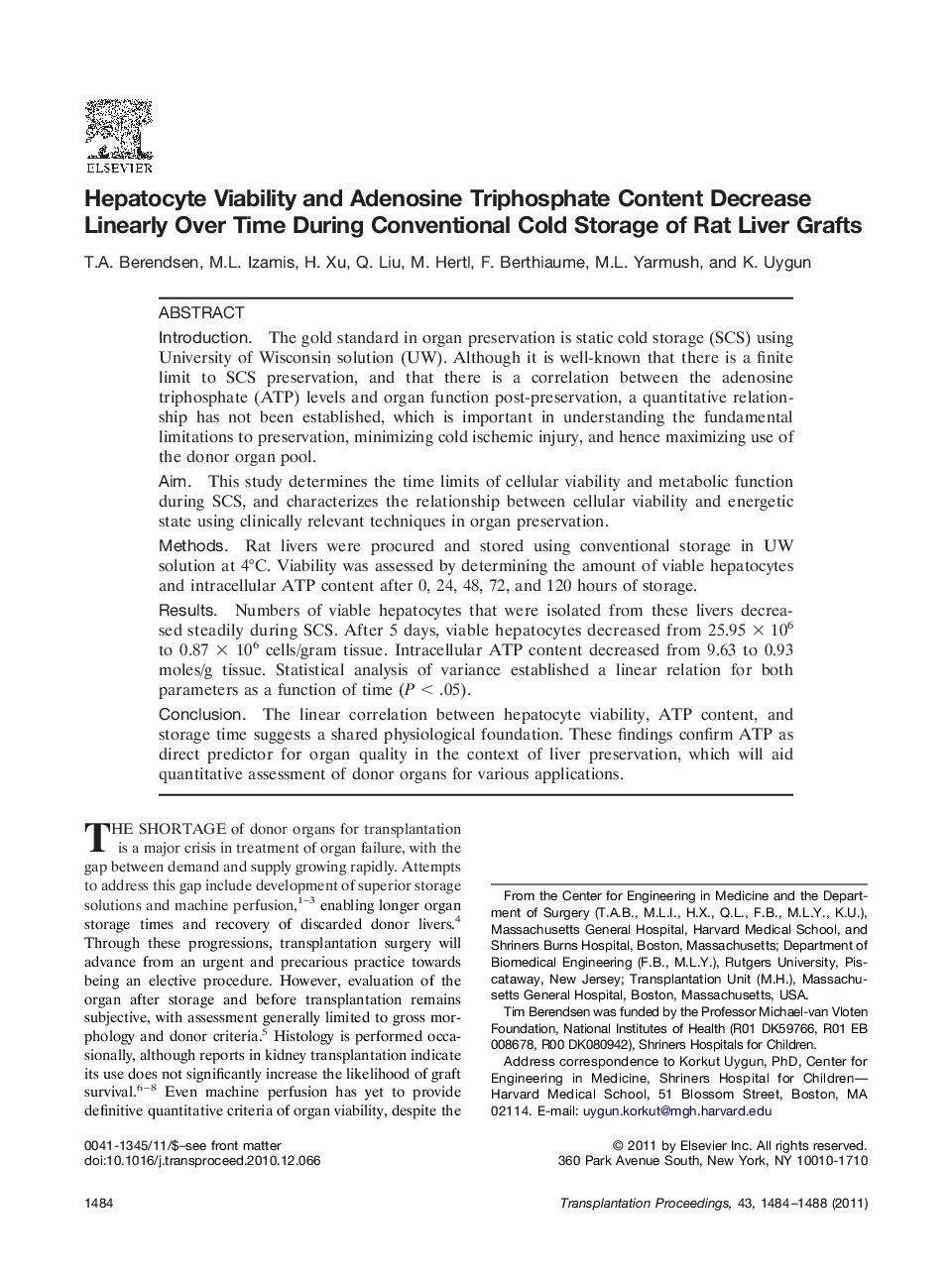| Article ID | Journal | Published Year | Pages | File Type |
|---|---|---|---|---|
| 6249150 | Transplantation Proceedings | 2011 | 5 Pages |
IntroductionThe gold standard in organ preservation is static cold storage (SCS) using University of Wisconsin solution (UW). Although it is well-known that there is a finite limit to SCS preservation, and that there is a correlation between the adenosine triphosphate (ATP) levels and organ function post-preservation, a quantitative relationship has not been established, which is important in understanding the fundamental limitations to preservation, minimizing cold ischemic injury, and hence maximizing use of the donor organ pool.AimThis study determines the time limits of cellular viability and metabolic function during SCS, and characterizes the relationship between cellular viability and energetic state using clinically relevant techniques in organ preservation.MethodsRat livers were procured and stored using conventional storage in UW solution at 4°C. Viability was assessed by determining the amount of viable hepatocytes and intracellular ATP content after 0, 24, 48, 72, and 120 hours of storage.ResultsNumbers of viable hepatocytes that were isolated from these livers decreased steadily during SCS. After 5 days, viable hepatocytes decreased from 25.95 à 106 to 0.87 à 106 cells/gram tissue. Intracellular ATP content decreased from 9.63 to 0.93 moles/g tissue. Statistical analysis of variance established a linear relation for both parameters as a function of time (P < .05).ConclusionThe linear correlation between hepatocyte viability, ATP content, and storage time suggests a shared physiological foundation. These findings confirm ATP as direct predictor for organ quality in the context of liver preservation, which will aid quantitative assessment of donor organs for various applications.
